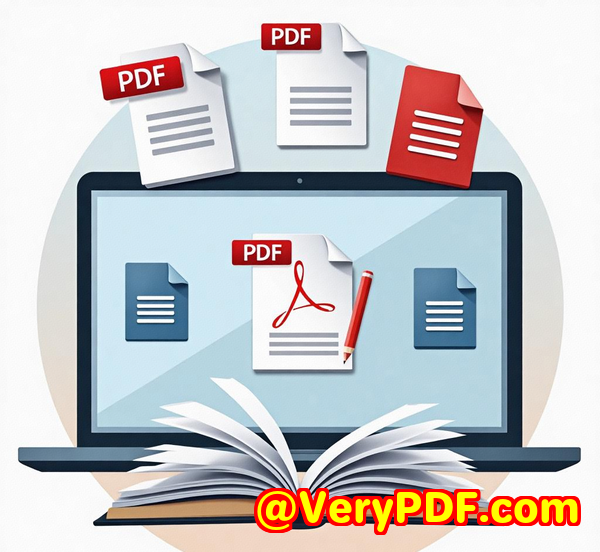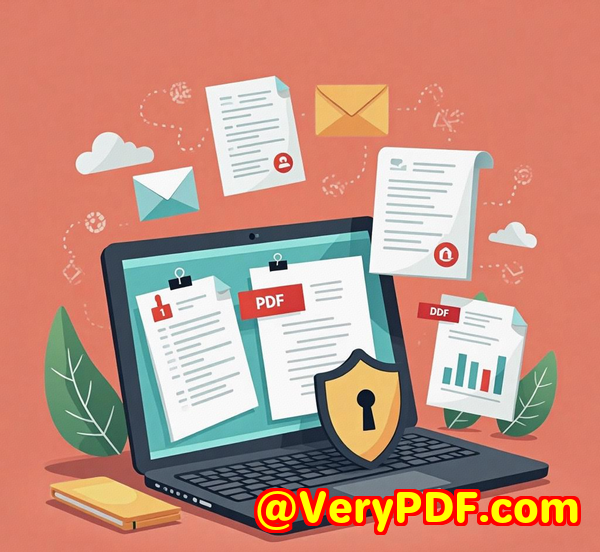Export Scanned Invoices from PDF to CSV Format Using ABBYY-Powered OCR Technology
Export Scanned Invoices from PDF to CSV Format Using ABBYY-Powered OCR Technology
Meta Description
Turn scanned invoices into usable CSV data quickly with VeryPDF's ABBYY-powered OCR technologyperfect for accountants, auditors, and finance teams.

Every time I opened my email on Monday mornings, it felt like drowning in a sea of scanned invoices.
You know the onesblurred PDFs from vendors, multi-page scans of receipts, invoices saved as random image files.
All of them unusable unless I manually typed every single line into Excel.
And believe meI tried everything. Copying text from PDFs, using cheap online converters, even paying for fancy 'PDF to Excel' apps.
But none could handle scanned PDFs properlythey either scrambled the data or missed half the content.
That's when I found VeryPDF's PDF Solutions for Developers, specifically its ABBYY-powered OCR tool.
Game-changer.
Let's unpack why.
Why Scanned PDF Invoices Are a Nightmare for Finance Teams
If you deal with scanned invoices dailywhether you're in accounting, bookkeeping, auditing, or procurementyou know the pain.
Scanned invoices are just images trapped inside a PDF.
No text layer. No way to export the data.
So you either:
-
Waste hours retyping every invoice.
-
Risk errors by using dodgy converters.
-
Or spend a fortune on outsourced data entry.
That's what made me start looking for a proper PDF to CSV extraction tool for scanned filesone that worked every time without drama.
How I Stumbled Onto VeryPDF PDF Solutions for Developers
A friend from the finance team at a retail chain tipped me off about VeryPDF's developer tools.
At first, I thought: "Great... another PDF tool promising the world."
But when I saw they were using ABBYY FineReader Enginethe gold standard in OCRI got curious.
I grabbed their trial version from VeryPDF's website and threw my worst batch of scanned invoices at it.
The result?
Crystal clear data extraction straight into CSV. No errors. No gaps. No weird symbols.
This wasn't hype.
It worked.
What Makes VeryPDF's Solution So Solid?
Here's why this tool wiped out every other option I'd tried:
1. Real ABBYY-Powered OCR Under the Hood
Forget about cheap or free OCR engines that miss half the text.
ABBYY FineReader Engine means enterprise-grade accuracy.
It pulled details like:
-
Invoice numbers.
-
Dates.
-
Line-item descriptions.
-
Unit prices.
-
Totals.
Even from low-res or slightly crumpled scans.
And all of it landed in a clean, structured CSV file ready for Excel, Google Sheets, or your ERP system.
No manual fix-up needed.
2. Multi-Language Recognition for Global Invoices
I deal with suppliers from Germany, Italy, and China.
Most tools freak out when they see foreign-language invoices.
But this beast handled:
-
English
-
German
-
Mandarin
-
French
...all in the same batch without choking.
It even recognised currency symbols and special characters.
That's rare.
3. Automated High-Volume Batch Processing
This is the killer feature if you process hundreds of invoices a month.
I pointed the tool at a folder stuffed with 400+ scanned PDFs.
It processed the lot overnight while I slept.
Next morning: 400 fresh CSV files.
All sorted. No crashes. No human errors. No late-night coffee.
My Favourite Bit: Zero Layout Damage
You know how other converters jumble everything into unreadable Excel soup?
This one kept table structures intact.
-
Invoice headers stayed on top.
-
Line items neatly lined up row by row.
-
Totals at the bottom where they belong.
I didn't have to wrestle with broken cell merges or mangled columns.
A Real-Life Example: Month-End Reporting Made Easy
Last month, my company closed its financial quarter.
Normally, this means frantic last-minute typing of invoice data into our accounting system.
Not this time.
I ran VeryPDF's batch OCR process on all supplier invoices.
In two hours, everything was in CSV.
Imported into Sage Accounting without drama.
The finance manager actually asked, "How the heck did you finish this so fast?"
Answer: ABBYY-powered VeryPDF tool.
Why Other Tools Fell Short (And This Didn't)
I've tried:
-
Adobe Acrobat Pro:
Useless on image-based invoices. Didn't extract tables properly.
-
Free online converters:
Failed half the time, scrambled data.
-
Manual copy-paste:
Nightmare for volume work. Missed fields. Human errors galore.
But VeryPDF PDF Solutions for Developers nailed it because:
-
It's made for devs and pros.
-
It's fast, even on huge document sets.
-
It's accurateeven with dodgy scans.
Who Needs This Tool? (Hint: Probably You)
This tool is perfect if you:
-
Work in finance, accounting, or auditing.
-
Process scanned PDF invoices from suppliers.
-
Need to convert PDFs to CSV for Excel or ERP systems.
-
Handle invoices from multiple countries or languages.
-
Want to save time and cut human errors.
Honestlyif you ever stared at 50 scanned PDFs and thought, "I wish these were in Excel"this is for you.
Other Cool Use Cases
Besides invoices, you can also use this tool to:
-
Extract tables from scanned contracts.
-
Turn receipts into expense reports.
-
Convert purchase orders into CSV format.
-
Grab signature data from PDFs for audits.
-
Extract metadata for document indexing.
What Makes VeryPDF PDF Solutions Stand Out?
Here's the short list of core advantages:
-
Powered by ABBYY FineReadertop-tier OCR engine.
-
Handles high-volume processingbatch mode is fast and stable.
-
Multi-language OCRperfect for international documents.
-
Structured data exporttables, rows, columns stay intact.
-
Easy CSV outputready for Excel, ERP, or database import.
No gimmicks. No pointless features. Just solid, reliable document processing.
My Honest Take
I've spent months trying PDF converters.
This is the first one that actually solved my problem:
Export scanned invoices from PDF to CSV formataccurately, fast, and with no stress.
If you handle scanned documents regularly, you need this.
Click here to try it: https://www.verypdf.com/
Or start your free trial and see for yourself.
Custom Development Services by VeryPDF
Did you know? VeryPDF also offers custom development services.
If your business needs a tailor-made solution for PDF, OCR, or document processingon Windows, macOS, Linux, or mobilethese guys can build it.
They can help you:
-
Create custom PDF tools for Python, C++, .NET, Java, or JavaScript.
-
Build virtual printer drivers that capture print jobs into PDF or image formats.
-
Develop OCR, barcode, or document analysis software.
-
Automate document workflows in the cloud.
-
Create PDF security, DRM, or digital signature solutions.
Need something special? Chat with their dev team here: https://support.verypdf.com/
FAQs
Q1: Can VeryPDF convert any scanned invoice into CSV?
Yes, as long as the scan quality is reasonable. ABBYY OCR can handle low-res images, but ultra-blurry scans may reduce accuracy.
Q2: Does the tool work with multi-language invoices?
Absolutely. It supports dozens of languages including English, German, French, and Mandarinperfect for global suppliers.
Q3: Can I batch process hundreds of PDFs at once?
Yep. The batch mode lets you feed in entire folders of scanned PDFs and spits out matching CSV files.
Q4: Will the extracted tables stay structured in CSV format?
Yes. Table structure is preservedno messy rows or columns.
Q5: Is this solution for developers only?
Nope. While devs can integrate it into apps or ERPs, finance teams and auditors can also use its ready tools directly.
Tags / Keywords
Export PDF invoices to CSV
Scanned invoice OCR extraction
PDF to CSV for accountants
ABBYY OCR PDF tool
VeryPDF PDF Solutions for Developers



